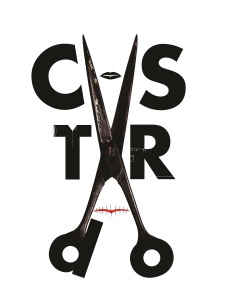My dream of earning a Master’s Degree in Latin American Culture almost ended the day my professor of Cuban Film, when evaluating my oral presentation on the history of Cuban cinema, rebuked me for having dared to mention works from the 1990s and the 2000s that were not produced by the Cuban Institute of Cinematographic Art and Industry – they were created by independent filmmakers. This academic was convinced that audiovisual works produced without the patronage of a recognized authority such as the State industry necessarily lacked quality, were illegitimate and deserved to be erased from the history of Cuban visual arts. That was something I felt really strongly about – too strongly to be able to hold myself back and remain silent. I identify closely with the freedom of expression that we, the Cubans, have overcome since the end of the twentieth century and since the arrival of new technologies that have allowed us to choose what we want to watch, as well as how and when we want to watch it – technologies that have even enabled us to shoot our own videos!
First there were video cassette players. I remember back in the 1980s, my friend German from the town of Ceballos had earned a reputation of being a wretched, mysterious man due to a secret that he had – he owned a video cassette player, which he had bought from a sailor. Just imagine that he rejected to sell it for a price equivalent to the value of several thoroughbred horses! Yet, the situation he was in was fairly difficult, since he was never supposed to commit the crime of inviting the public under his roof as an audience. This is how things were at the very beginning. After that came video cameras and computers. The Cuban socialist government (the “dictatorship of the proletariat”) has always tried to do its best to monopolize, hold back and control the flow of new technologies, because it knew that they transform the way social images are consumed and that they inherently give power to the people. I know it well. One of the first legal regulations introduced by the Revolutionary Government was the creation of the Cuban Institute of Cinematographic Art and Industry (ICAIC). The expropriation of cinemas, on the other hand, was the first measure in the wave of nationalization in Cuba, whose aim was to eliminate private property. Within this wave, a small cinema in Ceballos was confiscated from my father, even before he had been able to fully pay it off in installments. But that was not enough. The government also wanted to get hold of the country’s historical memory. The director of the ICAIC monopoly, Alfredo Guevara – the film maker who unsuccessfully tried to make my father accept a proof of payment, but my father answered: “I’m not selling it, you are stealing it from me!” – used to indulge in repeating the nonsensical sentence that Cuban cinema was born with the Revolution (suggesting that the Revolution was the supposed “year zero” of Cuban culture). A lie that would serve as an alibi for censorship, the destruction of and damage to a lot of celluloid.

Yet, the discussion with my professor (which took place deep into the 21st century) didn’t centre on the existence of films like La Virgen de la Caridad (“The Virgin of Charity”) from 1930, or filmmakers like Ramon Peon. In fact, our study program did include some evidence about filmmaking in Cuba before 1959 and even recognized that the works from that period had some artistic value. The films whose existence the school wanted to hide didn’t come from the distant past, but from the very present. When the teacher challenged me to give him examples of quality films, I mentioned Video de familia (“A Family Video”) directed by Humberto Padron in 2001, a kind of a video letter of a family to their exiled relative, and the documentary De buzos, leones y tanqueros (“Of Divers, Lions and Tankers”) directed by Daniel Vera in 2005. The new wave of digital, alternative and independent films has made it possible, for the first time in history, to capture the social and daily Cuban reality and show it, tentatively, on the big screen – in a raw state, the way it is really lived. Thus, for the first time in history, free audiovisual production has become a real possibility in Cuba. This democratization, brought by the new technologies of the digital era, has far surpassed the ideological machinery of the totalitarian system.
When the discussion turned to the contents of those two films, other students got involved after the professor dared to deny the existence of “Divers, Lions and Tankers” in Cuba, that is, the people who live off picking through garbage. My classmates reacted by giving him even more sad examples of the Cuban reality: mentally ill homeless people, beggars, begging children, etc. Yet, the thing that seemed to upset the professor the most was my pointing out the similarities with the documentary Tire dié (1960) by Fernando Birri. The Argentinian film-maker tells a story of children who run alongside trains, begging for change from rich travellers. As the highest authority in the classroom, the professor wasn’t able to come up with a better response than to maintain that the reality in Cuba was very different, that the children portrayed in the film were clearly sent by their parents, because, as he believed, they were vagrants. I thought that his reaction was identical to that of the wealthy travellers on the train whom Birri interviewed, but I didn’t tell him. It was the same hypocrisy. Putting on blinders to avoid seeing people as flesh and blood, people with real problems.
Then I realized that the lives of excluded beings living in some Havana districts were not the worst filth unearthed by Daniel Vera. It was the official insensitivity to human suffering that was so alarming. When asked whether there was any solution to the situation of such people, an official talking to the camera described a package of measures enforced by the Police, which had, for example, confiscated a cart and a horse from one family and imposed fines on many others. Unfortunately, this is not an isolated “red tape” case. Two or three years after the film was shot, the Granma newspaper (the official mouthpiece of the Communist Party) ran a story about a raid against Havana “divers”, whose objective was to improve the image of the city. The report contained the exact numbers of arrested and incarcerated people. The social utopia was strikingly absent amid all that garbage.
Just as performance arts were the cutting edge of Cuban art in the 80s, characterized by street-art or street performances staged timidly in public spaces, in the 90s it was Cuban literature (mainly narrations) which became fashionable, since it dared to tell “dirty” stories. However, none of this can be compared to the impact that audiovisual technologies have had on Cuban society in terms of social representation, immediate communication and the sharpness and density of the artistic expression. It was fairly easy to ban the performance of a play, close an auditorium and break up a group of actors, but it’s simply not possible to stop the virtual circulation of audiovisual material passed from hand to hand. On the one hand, a massive, spontaneous information channel opened up between the deaf and dumb official media and the traditional art forms that were shyly rebelling against the official press or compensating for the lack of it. On the other hand, a channel made up of USB flash drives appeared that allowed people to share videos that could be created and/or played by anybody.
Thanks to this new channel, numerous audiovisual works were able to come into existence such as Buscandote Havana (“Looking for you, Havana”, directed by Alina Rodriguez Abreu, 2006), at whose end I found the faces, the huts and the cries of the marginalized immigrants from the East who have come to live in our capital; also, A donde vamos (“Where are we going”, directed by Ariagna Fajardo Nuviola in 2009), a portrait of the powerlessness of farmers in the Sierra Maestra Mountains, who were facing absurd taxes while watching their crops rot; Gusano (“Counterrevolutionary”, by Ailer Gonzalez, 2014) on acts of repudiation committed in the name of the Revolution, which presents a detailed documentation of one of such acts of abuse as seen from the point of view of a cornered family, and many other videos that have, for various reasons, affected me.
The freedom I feel as an artist is based on the constant eagerness to search for new means of expression and to watch unapproved pictures that allow me to feel more and more removed from the silly lifeless existence of the official culture. I consider myself a writer in motion (even though words in literature are printed and tend to remain frozen) and the freedom of the audiovisual world gives me the necessary alertness to stay awake, activates me, and gets me involved in stories that reveal my soft spots, or sometimes even the amputated parts of my own reality.

Leave a comment